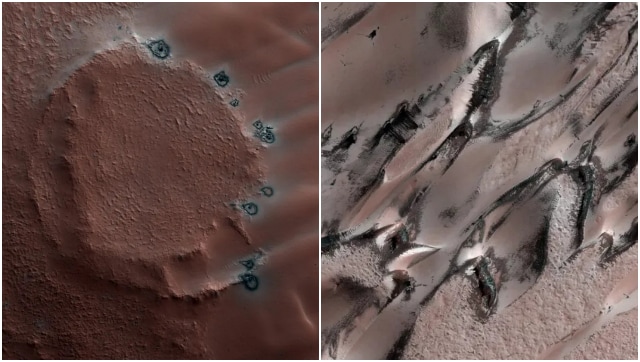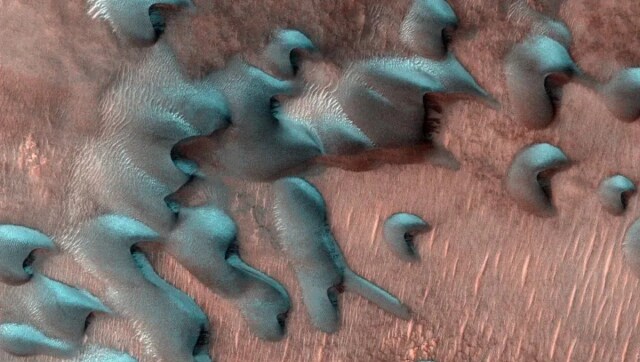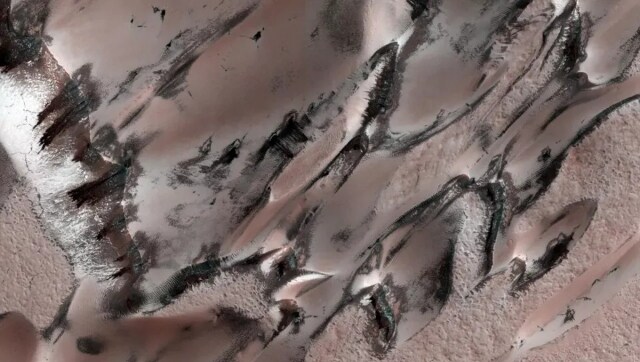Some people think that the cold weather in Delhi or the winter storm in the US is harsh. Well, they certainly wouldn’t like to visit Mars when space travel actually becomes a viable option. NASA took to their social media feeds across Twitter and Instagram and shared some magnificent images and factoids about the winter wonderland that Mars becomes.

The images reveal that barring the temperature, the weather behaves almost identically to the Earth’s winter season.
The images were first shared in the form of a video by the Jet Propulsion Laboratory or JPL. The video showed what snow, frost, and ice would look like on Mars.
Through the video, we also learn that Mars has a ton of dry ice, which is a form of carbon dioxide that is solid. The dry ice, instead of melting like regular ice, sublimates, or changes over to gas. During the process, it creates some bizarre but scenic landscapes, which give the images an ethereal appeal.
🎶Walking in a winter wonderland🎶
While you may not see a snowman on Mars, you can see frost – both the kind we’re used to (water) and dry ice frost (CO2)! @NASA spacecraft on the ground & in orbit help us study these unique Martian winters. Learn more: https://t.co/PoG5b1O2QF pic.twitter.com/1lv3RXcxEH
— NASA JPL (@NASAJPL) December 22, 2022
Mars also has water or regular ice. JPL Mars scientist Sylvain Piquex states in the video, “If you get to the correct spots, you will find water ice, similar to the one we have on Earth. This is the sort of water ice that astronauts might one day use when we travel there.”

Ice crystals fall on Mars just like snow always does on Earth. Phoenix discovered ice crystals dropping from a cloud when it used its Canadian-made LIDAR (or, light detection and ranging) to fire a laser into the planet’s sky.

There is also frost on some parts of Mars. NASA’s Viking landers captured images of water ice on Mars in the 1970s, and more lately, the Odyssey spacecraft and the Mars Reconnaissance Orbiter have captured images of carbon dioxide ice on the planet.

The presence of carbon dioxide ice on the planet should give you an idea about just how cold temperatures can dip on Mars. “We don’t experience CO2 frost here on Earth. Where you would discover CO2 ice, it is really cold, at -190 degrees Fahrenheit,” Piquex states. That’s almost -123 degrees celsius, far below what water freezes.
from Firstpost Tech Latest News https://ift.tt/P07XWMy

No comments:
Post a Comment
please do not enter any spam link in the comment box.